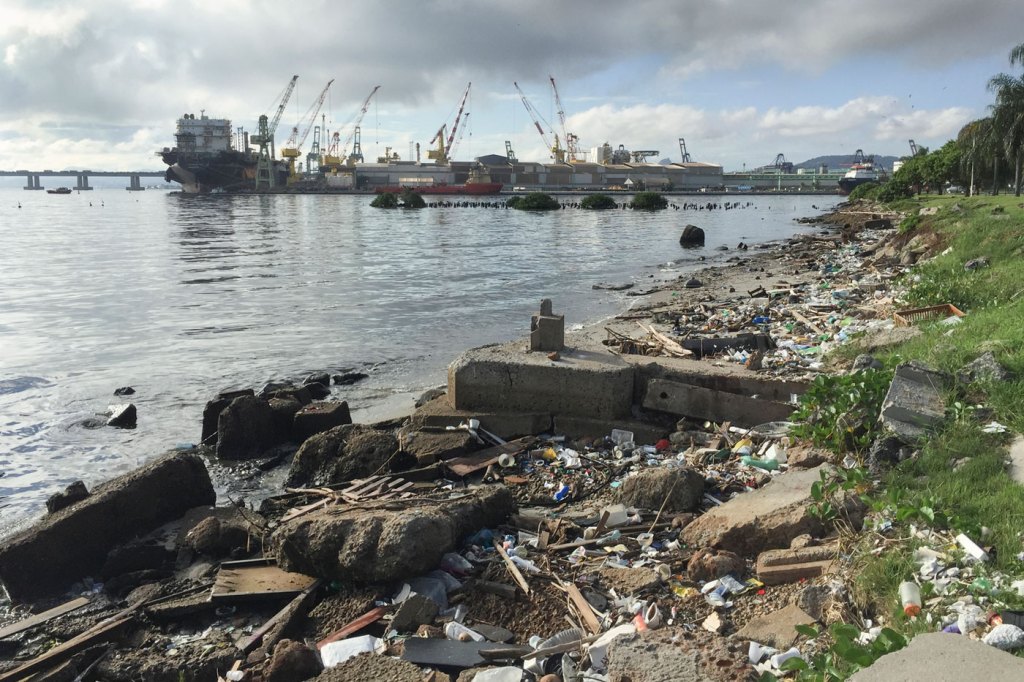3Qs: Why better infrastructure could solve Rio’s water problems

Sailing is underway at the 2016 Summer Olympics in Rio de Janeiro, a competition that is pitting athletes not only against each other, but against the health hazard that is Rio’s water.
 The water off Rio’s coast, such as in Guanabara Bay, is overrun with pollution and sewage to the point that Olympic rowers, swimmers, and sailors have been told to take extra precautions to ensure that they minimize direct contact with the water.
The water off Rio’s coast, such as in Guanabara Bay, is overrun with pollution and sewage to the point that Olympic rowers, swimmers, and sailors have been told to take extra precautions to ensure that they minimize direct contact with the water.
We asked Geoff Trussell, chair of the Department of Marine and Environmental Sciences and director of the Marine Science Center at Northeastern, how the pollution affects the aquatic ecosystem in Rio and what can be done to clean up the problem
How would you describe the water ecosystems around Rio? How do they differ from those in New England?
Given its tropical location, Rio receives considerably more rainfall than the New England region. This, coupled with the comparatively higher topographic relief around the city, can exacerbate floods and landslides. Like coastal cities in New England, there is major coupling between the land and sea that can create major environmental challenges under high population density as well as high urbanization and agricultural activity. These challenges are more acute in Rio compared to a city like Boston because the infrastructure that handles the movement of water through Rio and the treatment of its sewage is comparatively poor.
The main culprit appears to be untreated human waste, which has led to high levels of viruses and bacteria. What problems can that cause for a water ecosystem?
Human waste is the most notorious of the problems but I also suspect that agricultural runoff, e.g., fertilizer and manure, is also contributing to the deterioration of water quality around Rio. Regardless of the ultimate source, all of these pathways can enrich coastal waters with nutrients, and such enrichment can lead to exponential increases of phytoplankton and algal growth. The problem arises when all of this new growth begins to die and decay due to light or nutrition limitations. The decomposition of this organic matter depletes oxygen in the water column, potentially leading to “dead zones.”
Of course, tidal exchange can ameliorate this dynamic by delivering uncontaminated water onshore, but such exchange can only do so much—especially with such sustained nutrient/sewage deliveries to the system. The biggest threats to human health are viruses because bacteria like E. coli do not do well in seawater. I should note, however, that while the media has focused on the coastal bays where many Olympic events will be held, high bacterial loads in the streams and rivers that ultimately feed into Guanabara Bay represent a major health risk to human populations.
What can be done to make the waters off Rio safe? Is it already too late?
It is never too late, and developing solutions for the challenges, which is a major goal of Northeastern’s Urban Coastal Sustainability Initiative, will only become increasingly critical as our coastal populations and their economies grow. The fundamental issue in Rio that needs to be addressed is improved infrastructure that handles and treats sewage. Rio is clearly aware of the problem, but such infrastructure is expensive and this challenge is magnified by the substantial disparities in wealth within Rio and, I suspect, political motivation to effectively address the problem on a broad scale.
The watershed that integrates all of the land-based human activities and delivers them to the coast is agnostic about the socioeconomic status of the communities that reside in it. This reality highlights the importance of interdisciplinary solutions because all of these communities, rich and poor, are ultimately connected with one another in terms of their impact on the system and what it means for quality of life in Rio. The ultimate solution will require sound science and engineering, attention to social and environmental justice, and effective navigation of the significant economic challenges that accompany this level of infrastructural improvement.





